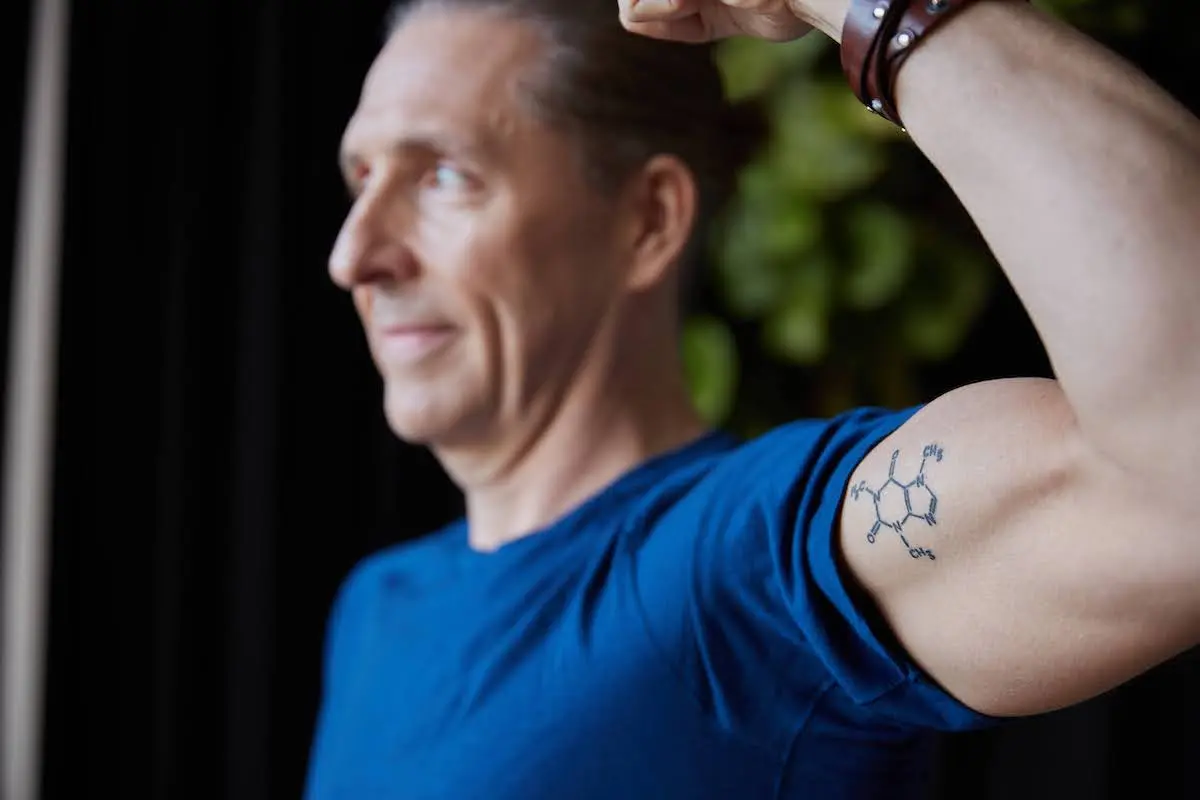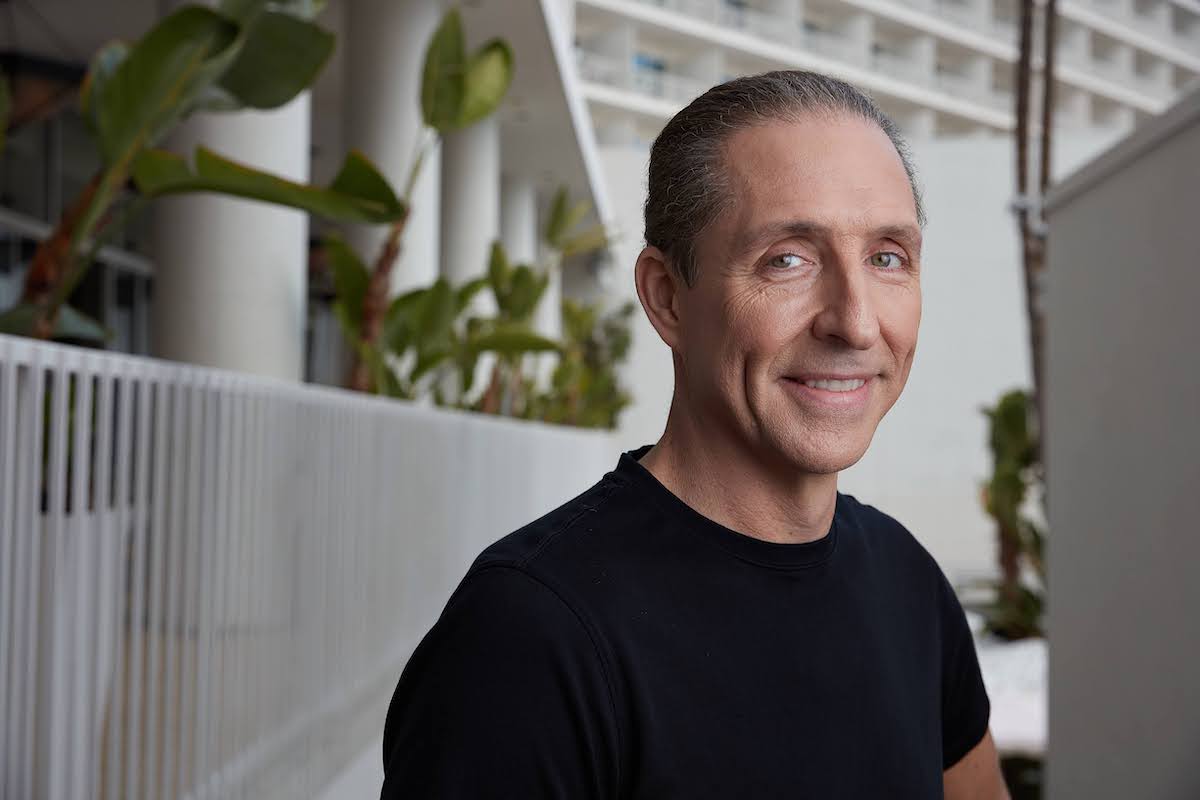Your metabolic age can be a powerful tool for achieving your health goals. Learn how to calculate it and make lifestyle changes to lower it.
Picture yourself stepping onto a scale, feeling a tinge of anxiety as the numbers reveal your weight. But what if there were another metric that could provide more profound insights into your overall health and vitality than just a number on a scale?
Enter metabolic age, an emerging concept that’s taking the world by storm and redefining the way we understand our bodies.
Improving yours can help you perform at your best. And bonus, you’ll likely look and feel younger than your actual age.
What is metabolic age?
Your body’s metabolic efficiency—that’s simply what metabolic age is. It very much differs from your chronological age (which is a fancy way of saying how old you are).
You see, your age doesn’t necessarily reflect your body’s optimal functioning. So that’s where metabolic age comes in. And it’s affected by a few factors:
- Diet and physical activity. Junk food and a sedentary lifestyle result in a higher metabolic age than your chronological age. On the other hand, a healthy diet and regular workouts make you younger, metabolically speaking.
- Genetics. It’s another significant player in your metabolic efficiency. Some people are just lucky to have a faster metabolism, regardless of their lifestyle choices.
So knowing where you stand metabolically can give you insight into the state of your physical health. Plus, it can help you focus on what changes to make in terms of diet and exercise.
Metabolic age vs. chronological age
A great analogy to explain the difference would be your birth certificate and your driver’s license. The former shows how many years you have been operating this human vehicle, while the latter indicates how effectively you have been caring for it.
While chronological age is relatively simple to determine, metabolic age considers a variety of elements. This includes your body composition, muscular mass, and resting metabolism—all of which can have an impact on how effectively your body is operating.
Let’s put it all in a handy-dandy comparison table:
| Chronological Age | Metabolic Age | |
| Definition | How many years you’ve been alive | A measure of your body’s metabolic efficiency |
| Factors | None | Body composition, muscle mass, resting metabolism |
| Importance | Useful for legal and societal purposes | A more accurate picture of overall health |
| Health risks | None | Associated with a greater risk of health issues such as type 2 diabetes and cardiovascular disease |
The bottom line is that your chronological age is important for legal and societal purposes, and your metabolic age measures how well your body is functioning.
So knowing your metabolic age can help you implement essential changes to be healthier and younger. And remember, age is just a number—it’s how you feel that really counts.
How is metabolic age calculated?
The obvious follow-up question is, “What’s my metabolic age?” From simple online calculators to more complex tests, there are a few methods to choose from:
- Metabolic age calculator. You input your age, height, weight, and activity level, and they calculate your metabolic age. Sounds like an easy option? Yes, indeed, but they may be easily inaccurate. You can try the Harris-Benedict Calculator.
- Metabolic age chart. It estimates your body’s metabolic rate compared to the average for your chronological age group. It helps you see if your metabolism is faster or slower by comparing your age with the metabolic age values.
- Specialized tests. They include a metabolic rate test or a body composition analysis. The great news is, they picture your body’s metabolism and composition in more detail, which is crucial when you have specific health issues.
Calculate it yourself. There is a generic and simple calculation you can use to determine your metabolic rate. Here’s how to do it:
- Determine your body mass index (BMI) first. You can calculate it by dividing your height in meters by your weight in kilograms.
- Measure your waist circumference at the level of your belly button.
- Using your BMI and waist measurement, calculate your body fat percentage. You can use an online calculator or chart.
- Use an online metabolic age calculator or equation to estimate your metabolic age based on your body composition and other factors.
- Calculate it by using the metabolic age formula: For men: 66.5+(13.75 x kg)+(5.003 x cm)—6.775 x age; for women: 655.1+(9.563 x kg)+(1.850 x cm)—4.676 x age.
It’s important to keep in mind that there are limitations and potential inaccuracies with any method of calculating metabolic age.
One is due to genetics, medications, and certain health conditions that can affect your metabolic rate. And the second is that different calculators or tests may use different equations or methods, leading to varying results.
Metabolic age and health
To reiterate, understanding your metabolic age can provide valuable insights into your overall health and risk for certain conditions. It can also help you identify areas for improvement in your lifestyle and habits. The key is to monitor it continuously so that you can track the results and make further adjustments.
Most importantly, by improving your metabolism, you can age gracefully, as aging and metabolism are inextricably linked.
Plus, there is plenty of research looking into this topic:
- If you lower it by at least one year over twelve months, it will result in a 60% lower risk of developing cardiovascular disease, according to this study.
- Another cohort study has shown that if you lower it by two years, it will improve your blood pressure, cholesterol levels, and insulin sensitivity.
So regardless of your current metabolic age, by making small but sustainable changes to your lifestyle and being consistent in your efforts, you can lower it.

How to lower your metabolic age, according to Dave Asprey
Improving metabolic age entails a comprehensive approach that involves a combination of diet, exercise, and lifestyle changes. And Dave Asprey, renowned biohacker and trainer of Mindvalley’s Smarter Not Harder Quest, is the perfect person to turn to for guidance.
With his tips and insights, here are seven biohacking techniques to lower your metabolic age:
1. Try whole-body vibration training
There are two things to know here:
- Whole-body vibration training (WBVT) plate, which is a little device that can help you hack your strength and recovery in just minutes every day.
- Whole-body vibration training plate, which is a platform that vibrates at a specific frequency to activate your body’s systems simultaneously, improving flexibility, blood flow, and reducing muscle soreness and cortisol levels.
Dave explains that WBVT increases strength and explosive strength, promotes fat loss and hormonal balance, increases bone mass and mineral density, and, in other words, makes your body perform at its best.
How to use a vibration plate:
- Simply stand on the plate with your knees bent at a 30-degree angle for thirty seconds or one minute in the beginning.
- You can perform your favorite exercises to stimulate muscle growth.
- Work your way up to 15 minutes per day.
2. Be mindful of what you eat
Healthy fats, lean proteins, and non-starchy vegetables will help you lower your metabolic age. And processed foods, refined sugars, and grains will make you metabolically older.
If you are ready to modify what you eat, try Dave’s Bulletproof Diet.
How to follow the protocol:
- Eat more: grass-fed meats, wild-caught seafood, organic vegetables, low-sugar fruits, avocado and coconut oil, raw nuts, and seeds.
- Eat in moderation: berries, grass-fed butter, ghee, and gluten-free grains like quinoa and rice.
- Avoid whenever possible: processed foods, sugar, grains with gluten, vegetable oils, and most legumes.
3. Do intermittent fasting
Intermittent fasting supports metabolic flexibility and insulin sensitivity. In fact, it’s one of the most researched and scientifically proven ways to improve your metabolic health, increase your health span, and increase your longevity.
How to do intermittent fasting, according to Dave:
- Skip breakfast.
- Break your fast and have your first meal at noon.
- Eat dinner between 6 p.m. and 8 p.m.
- Stop eating by 8 p.m.
- Repeat the next day, with your first meal at noon.
The key is to experiment with different protocols and find the one that works best for you.
4. Try cold therapy
Cold therapy is another scientifically proven way to lower your metabolic age. According to this meta-analysis, exposure to cold makes your body burn more whole-body glucose and utilize more fat.
Another benefit of cold therapy is that it makes you more receptive to dopamine. Simply speaking, being cold equals being happy.
Three or five minutes of being cold equals ‘I’m happy all the time,’ ‘I have more energy,’ ‘I have more things done.’
— Dave Asprey, trainer of Mindvalley’s Smarter Not Harder Quest
How to do cold therapy:
- Take cold showers in the morning,
- Try a cryotherapy session, and
- Immerse yourself in ice baths. Start slowly by dipping your face first to allow your body to adjust to the low temperatures.
5. Prioritize high-quality sleep
Scientists have found that poor sleep and metabolic syndrome (MetS) are almost synonymous in terms of their detrimental effects on your overall health. They both lead to an increased risk of cardiovascular disease, diabetes, and obesity.
So, how many hours should you sleep to improve your metabolic age? The magic number for metabolically-optimized sleep is seven to eight hours per night.
How to prioritize your sleep:
- Set a consistent sleep schedule to wake up at the same time every day, even on weekends.
- Create a sleep-conducive environment, such as a cool, dark, and quiet bedroom.
- Avoid caffeine and alcohol in the evening.
- Practice relaxation techniques like meditation, deep breathing, or yoga to help calm your mind and prepare for sleep.
- Try sleep-enhancing supplements like magnesium, GABA, and melatonin to help improve the quality of your sleep.
- Use technology to optimize sleep, like the Oura ring or a Fitbit, to monitor your sleep patterns and identify areas for improvement.
- Get sunlight during the day.
6. Reduce stress
Just like impaired sleep, persistent psychosocial stress makes you susceptible to metabolic disease. The more stressed you are, the older your metabolic age is.
One of the best ways to manage your daily stress is to learn how to relax and breathe properly. When you are able to do both, you calm your nervous system.
How to reduce your stress:
- Do breathing exercises before going to bed.
- Practice mindfulness meditation.
- Regularly ground yourself by walking barefoot.
7. Reduce environmental toxins
We’re all exposed to over a hundred environmental toxins every day. They are disguised in dust, food, tap water, personal care products, makeup and skincare products, fragrances, cleaning supplies, household goods, building materials, and devices.
According to this study, they disrupt your endocrine system and metabolic health. It means that there is another factor apart from the genetic background, changes in diet and exercise, and natural aging. Specifically, environmental factors are increasingly contributing to all sorts of metabolic and cardiovascular diseases.
Here’s what you can do:
- Get rid of all plastic and BPA-containing items and scented products.
- Choose natural and organic products.
- Air your house early in the morning and late in the evening, or get an air purifier.
Grow younger, not older
With metabolic age, it’s not about counting the candles on your birthday cake. But it sure does give you a far better picture of where you stand in terms of your health and overall performance.
If you want to learn how to improve your metabolic age, join Mindvalley’s 14-day Smarter Not Harder challenge with Dave Asprey.
By following his tips and strategies, you can take control of your health and make the most of your biology.
Want a sneak peak? Sign up for a free account and get access to the first lessons from this Quest. Your health will thank you for it.
Welcome in.









